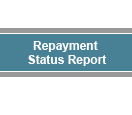| |
| Français | Contact Us | Help | Search | Canada Site | ||||||
| TPC Home | About TPC | Media Room | Site Map | Industry Canada | ||||||
 |
 |
 |
|
|
|
|||||||||||||||||||||||||||||||||||||||||||||
 |
Eligibility CriteriaTPC innovation officers can answer specific questions regarding the eligibility of your project.
TPC – IRAP InitiativeTPC has partnered with the National Research Council (NRC) to provide pre-competitive or pre-commercialization assistance to small and medium-sized enterprises (SMEs) through NRC's Industrial Research Assistance Program's (IRAP) national network of Investment Technology Advisors. If the forecast eligible costs of your project do not exceed $3,000,000, and you operate an SME (a company having 500 or fewer employees), you should contact IRAP at 1-877-994-4727 or through the IRAP Website: http://irap-pari.nrc-cnrc.gc.ca/english/iraptpc_e.html. If the forecast eligible costs of your initiative exceed $3,000,000, then you should deal directly with TPC through the processes outlined in For Industry. While the upper limit to the size of a project may be constrained by the availability of funds, there is no restriction on the size of company which can be supported by TPC.
Types of recipients, areas, activities and costs eligible for TPC investmentEligible Recipients Eligible recipients are firms, organizations or institutions established in Canada, which are prepared to conduct research, development and innovation activities in the eligible areas, and which can demonstrate their ability to achieve the stated objectives of the proposed project. Eligible recipients may be incorporated entities, partnerships, cooperatives, or any trustee or legal representative thereof, or groups or alliances of eligible recipients where a lead recipient has been identified. Agencies of the Crown (including Crown corporations, government institutes, government laboratories, etc.) and universities may be allowed as members of alliances, but not as lead recipients. Eligible Areas Eligible areas are Environmental Technologies, Enabling Technologies and the Aerospace and Defence Sector, which are outlined below.
Eligible Activities The following activities are eligible for TPC funding:
Eligible Costs Eligible costs include labour, material and other costs which are directly attributable to the project. Overhead expenses such as indirect labour, materials and supplies, and general and administrative expenses are also eligible. Specialized equipment for the project may be eligible as well. TPC does not support costs associated with land and buildings. If required, further details on eligible and ineligible costs are available from a TPC Innovation Officer. No costs will be considered eligible if they are incurred prior to the date which TPC confirms that the Investment Proposal received from your company is approved.
Criteria that TPC uses for selecting investmentInvestment Outlines and Proposals are assessed in the context of their relevance to the objectives of TPC, namely the extent to which they demonstrate:
TPC will be administered in accordance with Canada’s international agreements. The granting of assistance to enterprises that export will not be precluded merely because they export. Contributions will not, however, be contingent, either in law or in fact, upon actual or anticipated export performance, and administering officials will not request or consider information concerning the extent to which applicant or recipient enterprises do or may export. Other important criteriaThe following additional information on TPC may be helpful as you develop your Investment Outline:
Lobbyist Registration Act: The Lobbyist Registration Act (LRA), Industry Canada and Treasury Board of Canada (TBC) policies regarding Grants and Contributions and the terms and conditions of the TPC Contribution Agreement require that all TPC applicants ensure that, if consultant or in-house lobbyists are used in communications with TPC regarding the award of a potential Contribution Agreement or of an amendment, that such persons are duly registered according to the requirements of the LRA and that no commissions or other contingency payments are to be made. With respect to the consideration and awarding of a TPC Contribution Agreement or of an amendment, under the Lobbyist Registration Act, a “lobbyist” includes ANY PERSON who, for payment or any other consideration, undertakes to communicate with a public office holder and/or arranges a meeting between a public office holder and any other person. Such an individual must be registered and in compliance with the Lobbyist Registration Act. Under that same Act, persons employed by a company may also be considered as in-house lobbyists, thus requiring their registration, if, among their duties, they are to communicate with “public office holders”. The most senior officer (most commonly the chief executive officer) of the organization must register on behalf of all employees of the organization within two months of commencing lobbying activities. The filing will need to provide the names of all the senior officers within the corporation and their direct reports whose collective time devoted to lobbying works out to be the same as a significant part (20 percent or more) of one employee’s duties. As well the names of any other employees who individually lobby as a significant part of their duties must be filed. It is also a TBC policy that a person cannot be paid a reward such as a commission, an advantage or benefit of any kind as consideration for cooperation, assistance or the exercise of influence related to the transaction of business with, or any matter of business, relating to the Government. These conditions, contained in the TPC Contribution Agreement, apply and must be respected throughout the TPC application process and execution of approved projects, including from the time of preparation and submission of an Investment Outline to completion of the Benefits Phase of an approved Contribution Agreement. Further details on the Lobbyist Registration Act and its administration can be found by accessing the web site at: http://strategis.ic.gc.ca/epic/internet/inlr-el.nsf/en/Home. TPC encourages your company to consult its legal counsel to ensure that your company is in compliance with the provisions of the Lobbyists Registration Act, as amended on June 20, 2005 and the regulations promulgated thereunder. |
|||||||||||||||||||||||||||||||||||||||||||||
| Created: 2005-06-23 Updated: 2006-08-30 |
Top of Page |
Important Notices |
||